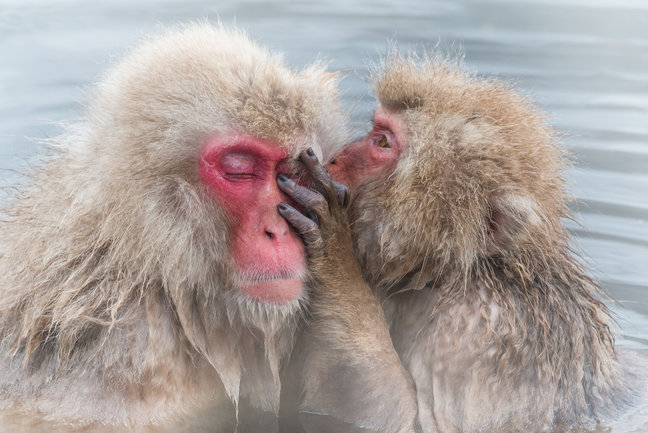Please enter your username and password to logon to the member pages

Japanese Alps and Snow Monkeys
Japanese Alps and Snow Monkeys Overview
Japanese Alps, Snow Monkeys and Heritage Sites tour of Japan This tour takes you from the vibrant capital city of Tokyo on a trail through picturesque villages, castle towns and the remarkable snow monkeys of Jigokudani Park.Immerse in Japanese culture, taste traditional cuisine, rest in traditional ryokans and unwind in Japan's famous onsen.
Best season to visit is during Spring and Autumn. Mar to May and Sep to November.
Touring style: self-guided adventure with scheduled coach excursions
Day 1: Arrival Tokyo
On arrival, meet and greet at the airport and transfer to your chosen hotel.
Overnight.
Journey time: Approximately 1.30 to 2 hrs
Day 2: Tokyo full day touring
This morning your guide will meet you at your hotel for a full day sightseeing utilising Tokyo’s super-efficient metro system.
Begin the day with an early morning visit to Meiji Shrine; perfectly timed to avoid the crowds. Tokyo’s most famous shrine is dedicated to the spirit of the late Emperor Meiji and the park that surrounds the shrine is a forest of some 120,000 trees of 365 different species, making you forget you are in the world’s largest city.
Next to Meiji Shrine is Harajuku – Tokyo’s youth fashion mecca. Whether you are a Goth, punk or anything in between, there is a shop in Harajuku that caters for you.
Neighbouring Harajuku is Omotesando, commonly referred to as Tokyo’s Champs-Elysee. This broad, tree-lined avenue features a multitude of fashion flagship stores designed by internationally renowned architects within a short distance of each other.
From Omotesando, take the metro to Ginza. Named after the silver-coin mint established there in 1612, Ginza is Tokyo’s famous upmarket shopping, dining, and entertainment district. Adjoining Ginza lies the Imperial Palace, the main residence of the Emperor. You can take a stroll through the Palace East Gardens.
Your last stop for the day is Asakusa, part of Tokyo’s Shitamachi, or old town. Asakusa is home to Sensoji Temple, Tokyo’s oldest Buddhist temple, and is also the city’s oldest Geisha district. The streets around Sensoji have many traditional shops selling Japanese crafts and souvenirs and are a delight to wander through.
Overnight in Tokyo.
Day 3: Travel to Matsumoto
Venture into the Central Japanese Alps in Nagano Prefecture, to the castle town of Matsumoto.
Located 3 hours from Tokyo, Matsumoto has flourished as a castle town since the 16th century. In addition to its historical and cultural heritage, Matsumoto is surrounded by mountains and is acclaimed for its beautiful views. This afternoon make a visit to Matsumoto Castle, one of the most complete and beautiful among Japan's original castles. The castle is also called Crow Castle because of its black walls and spreading wings.
Matsumoto is also known as one of the best bar towns of Japan, so tonight, get lost in the little streets of the town and try out some typical Japanese old style bars.
Overnight in Matsumoto.
Journey times by train:
Tokyo to Nagano: 1.30 hrs
Nagano to Matsumoto: 50 mins
Day 4: Visit the Snow Monkeys
Head to Nagano and continue on by train and bus to visit Jigokudani Park to see the famous Snow Monkeys. Jigokudani literally means ‘Hell's Valley’ due to the steam and boiling water that bubbles out of small crevices in the frozen ground, and it is in the baths of this boiling water that the resident Japanese Macaques like to soak in on.
The monkeys live in large social groups, and it can be quite entertaining to watch their interactions. Accustomed to humans, they can be observed from very close and almost completely ignore their human guests. Whilst the monkeys are most numerous during the colder months, they can be observed all year round.
In the late afternoon, head back to Matsumoto for another night in this beautiful castle town.
Overnight in Matsumoto.
Journey time by train:
Matsumoto to Nagano 50 mins
Nagano to Yudanaka: 45 mins
Day 5: Matsumoto to Kiso Valley
Head to the stunning Kiso Valley region, where you will be following in the footsteps of samurais and lords as you hike the old Nakasendo trail from Tsumago to Magome.
This well-maintained section of the trail leads through the countryside and passes right alongside the houses and fields of local residents. The 8km walk takes approximately 3 hours to complete at a leisurely place.
Tonight you will be staying in Tsumago, one of the Post towns that served the 500km Nakasendo trade route that ran between Kyoto and Edo (Tokyo) during the Edo Period (1603-1867). Overnight in Tsumago.
Journey times by train:
Matsumoto to Nagiso: 1 hr
Nagiso to Tsumago: 10 mins by bus
Day 6: Travel to Takayama
Take the train to Takayama In the afternoon you can visit the Takayama Festival Floats museum, displaying floats from the famous Takayama festival, or simply wander through the beautifully preserved old town. We also recommend dropping into one of the town’s many sake breweries for a tasting before heading back to your ryokan.
Overnight in Takayama.
Journey times by train:
Nagiso to Nagoya: 69 mins
Nagoya to Takayama: 2.30 hrs
Day 7: Day tour of Shirakawago
After breakfast, go to the Miyagawa Morning Market where locals sell their handmade crafts and local produce. Afterwards, go by bus to Shirakawago, the region in Toyama Prefecture famous for its UNESCO World Heritage gassho-zukuri farmhouses. Gassho-zukuri means "constructed like hands in prayer," and the farmhouses' steep thatched roofs resemble the praying hands of Buddhist monks. The roofs, which were constructed without any nails, are intricately designed to withstand the large amounts of heavy snow in winter and the large attic was used to cultivate silkworms.
Stroll around the main area in Shirakawago and visit a couple of farmhouses like the Wada House, a legacy left behind by the Wada Family who was one of the richest families and village leaders in Ogimachi. Their status in the community was well represented by the size of their house as it was and still is the largest gassho-zukuri farmhouse in the village. What’s trivial about this house is that no nails were used but just ropes that hold everything together. Inside you will find a number of antiques such as silk worm installations, looms, and irori, the traditional sunken hearth used for heating and for cooking.
Return to Takayama for another night.
Distance and journey time: 58 km, 1 hr
Day 8: Travel to Kyoto
Take the Limited Express Hida Wideview, one of the most scenic train journeys in Japan, winding its way through tall mountains and stunning gorges to Nagoya. ( 1 hr 30 mins). Change to the Shinkansen bullet train to Kyoto, home to an astonishing 2000 Shrines and Temples, including 17 UNESCO World Heritage Sites. (35 mins)
Overnight in Kyoto.
Journey time by train:
Takayama to Nagoya: 2.30 hrs
Nagoya to Kyoto: 40 mins
Day 9: Kyoto touring
Full-day guided sightseeing tour of Kyoto.
Visit: Kinkakuji Temple (Golden Pavilion), Ryoanji Temple (Zen Rock Garden), enjoy the Miyako Odori (a Spring Geisha Dance show), and amble along the Philosopher’s Path.
Day 10: Departure
Take the train to Osaka Kansai Airport for departure or continue your Japan adventure.
Distance and journey time: 81 km, 1.30 hrs






